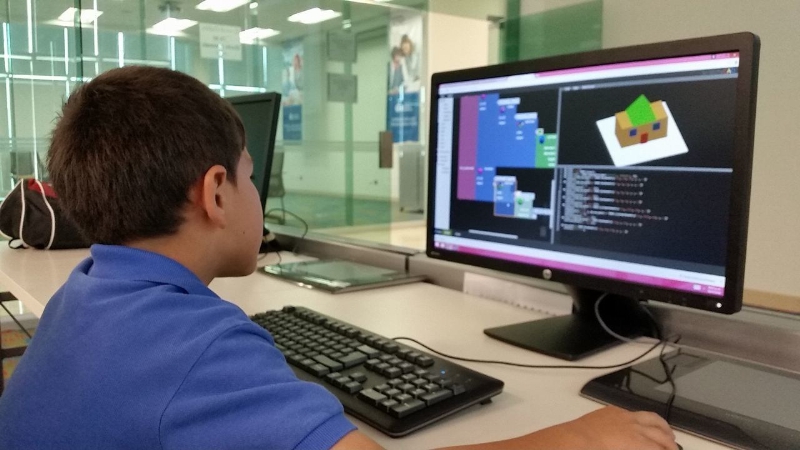
ScratchyCAD makes it easy to learn complex concepts like parametric design in a simple, beginner-friendly interface. Image Courtesy of ScratchyCAD
Latest News
September 20, 2016
Parametric design is a staple in the average engineers’ toolbox, but it doesn’t make the tools and concepts any less complex and therefore, difficult to master.
A Kickstarter-funded CAD startup is taking aim at that problem with its new ScratchyCAD browser-based offering, which leverages drag and drop style blocks and computer programming techniques to make parametric CAD more accessible. ScratchyCAD makes it easy to abstract complex concepts like solid geometry through support of MIT’s Scratch, a free visual programming language used by students and teachers to create animations and games, among other use cases. By giving traditional parametric CAD a makeover with a drag and drop programming language and block-based programming style, ScratchyCAD can give budding students or hardcore engineers a foundation for parametric design, which traditionally has been complicated and overwhelming, according to Sam Weatherly, a co-founder of the firm.
 ScratchyCAD makes it easy to learn complex concepts like parametric design in a simple, beginner-friendly interface. Image Courtesy of ScratchyCAD
ScratchyCAD makes it easy to learn complex concepts like parametric design in a simple, beginner-friendly interface. Image Courtesy of ScratchyCAD“We use a drag and drop coding system to make it more user friendly,” he says, explaining that the startup saw an opening because not enough students have exposure to parametric CAD concepts and tools at an early enough age. “We are using more of a visual programming language to break down the barrier of parametric design. Most professionals have been using parametric CAD, but students are taught other things then have to switch platforms when they get in the real world.”
Jointly developed by teachers and engineers, ScratchyCAD leans heavily on Scratch and the block-based programming style to make parametric CAD design easy to understand. Users access these blocks to define objects such as shapes, arrays, materials, lights, even simulation, while the advanced 3D modeling software works to automate design tasks. “The blocks are like lego pieces—you literally drag them over and clip them together,” he explains.
 ScratchyCAD brings together computer programming and CAD in a simple interface with drag and drop style blocks. Image Courtesy of ScratchyCAD
ScratchyCAD brings together computer programming and CAD in a simple interface with drag and drop style blocks. Image Courtesy of ScratchyCADCompare this approach to a traditional parametric tool where users might add a primitive shape, edit its components like a face or edge, and move it around to modify the object. With ScratchyCAD, users define objects by connecting blocks, an approach that requires the user to understand the constraints and setup the right parameters to create the object from the get go.
While ScratchyCAD is taking aim at indoctrinating students and beginners into parametric 3D CAD, it claims there is enough functionality for professional engineers to get started, especially those that haven’t mastered parametric design.
The startup is set to launch its Kickstarter campaign on October 1, the goal being to raise $25,000. The software will make its debut at the World Maker Faire in New York in the same timeframe. The company also aims to release a series of courses, aimed at entry-level learners and CAD beginners, to provide an overview on the concepts and the product, including its integration with 3D printing.
Check out this video to see how ScratchyCAD works—in this example, how to extrude a 2D shape on a path.
Subscribe to our FREE magazine, FREE email newsletters or both!
Latest News
About the Author
Beth Stackpole is a contributing editor to Digital Engineering. Send e-mail about this article to [email protected].
Follow DE





